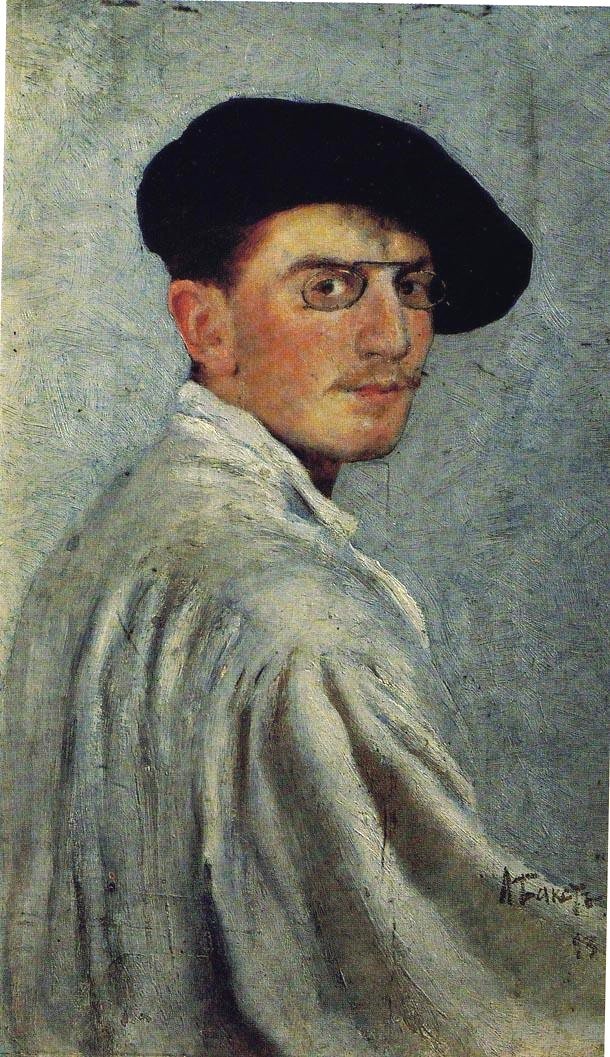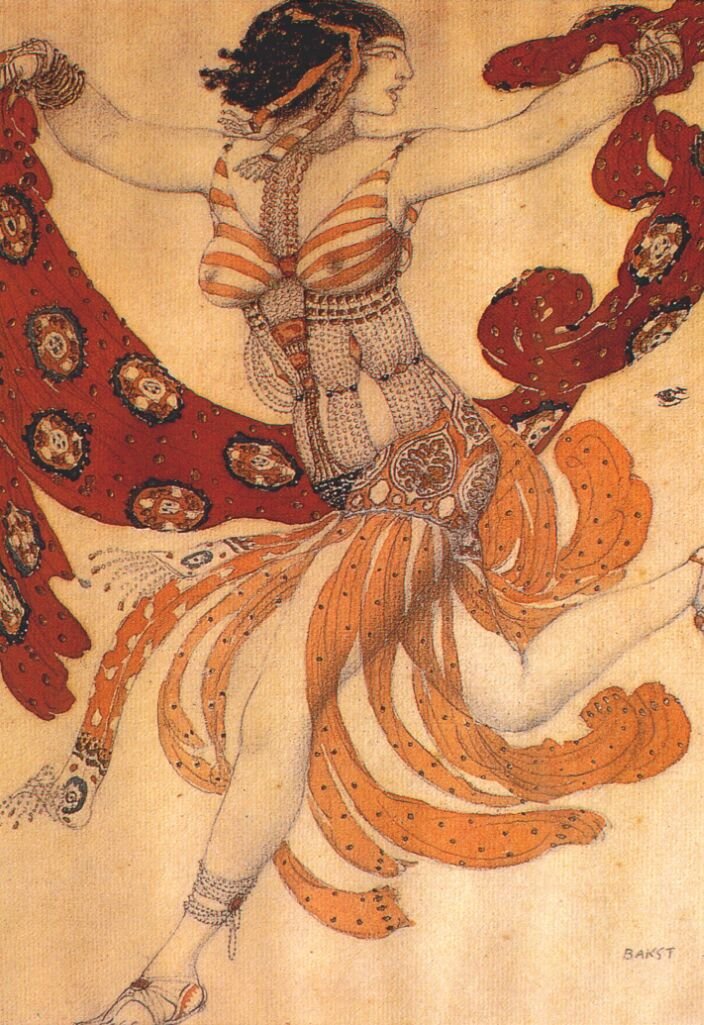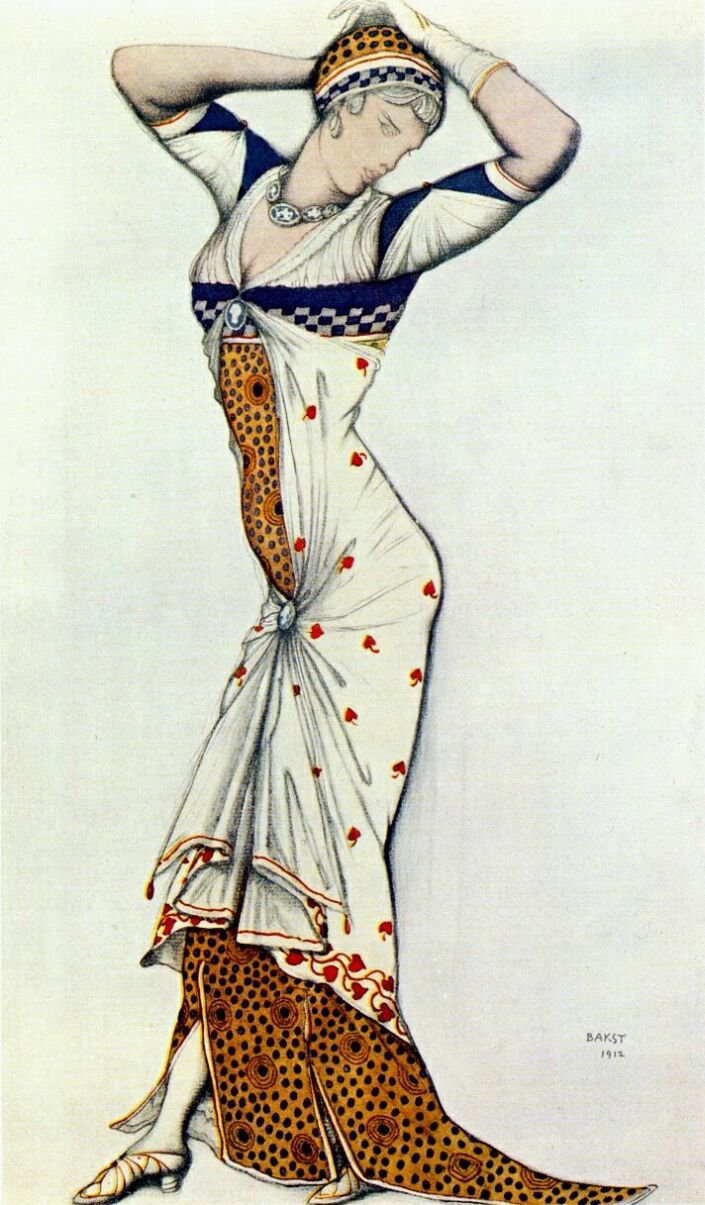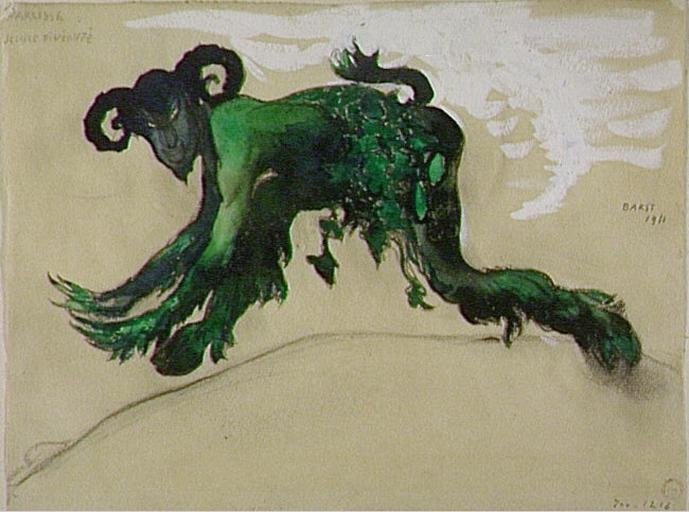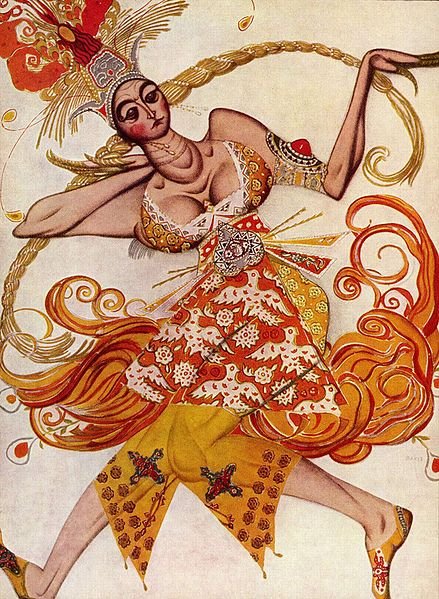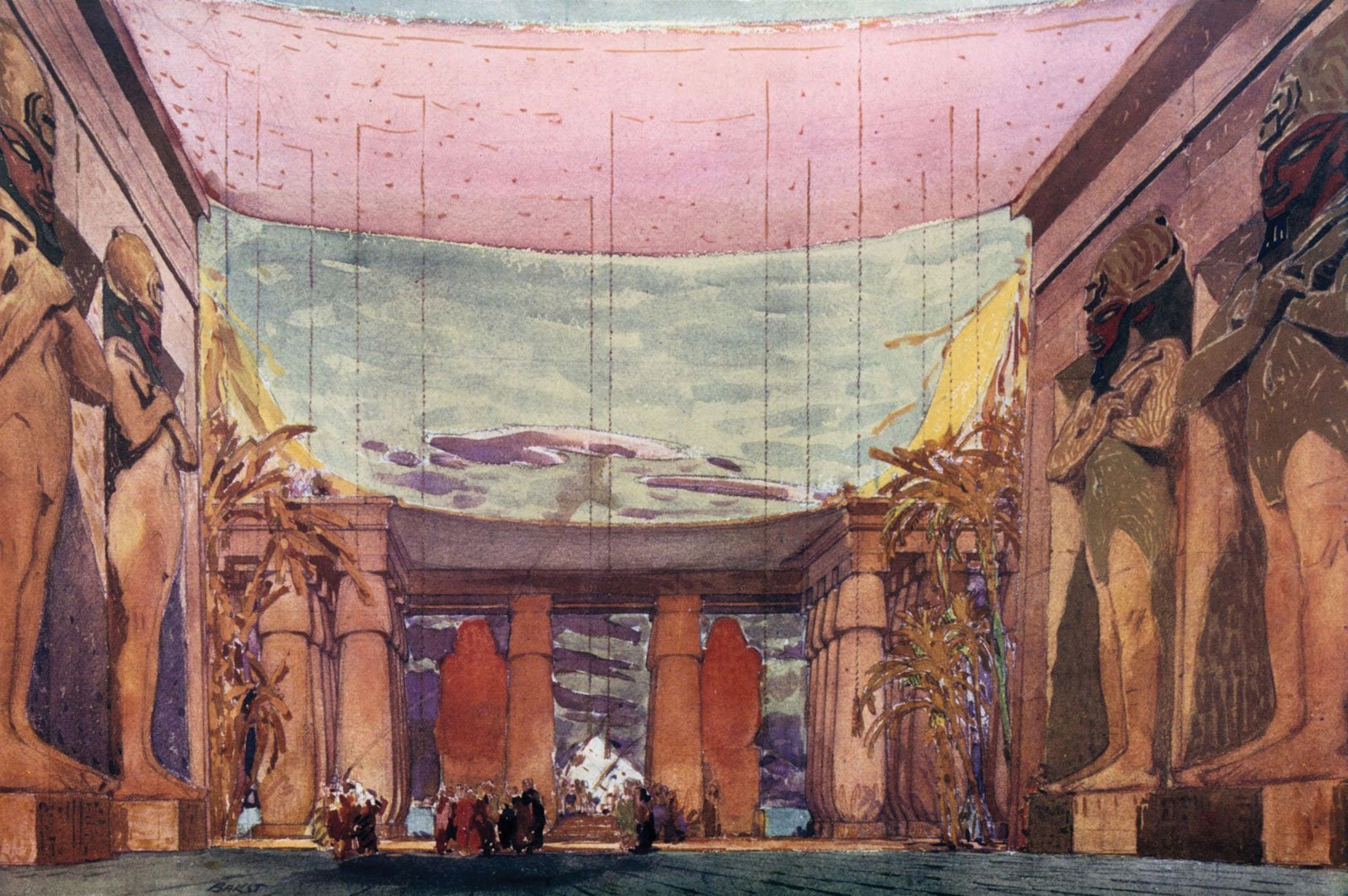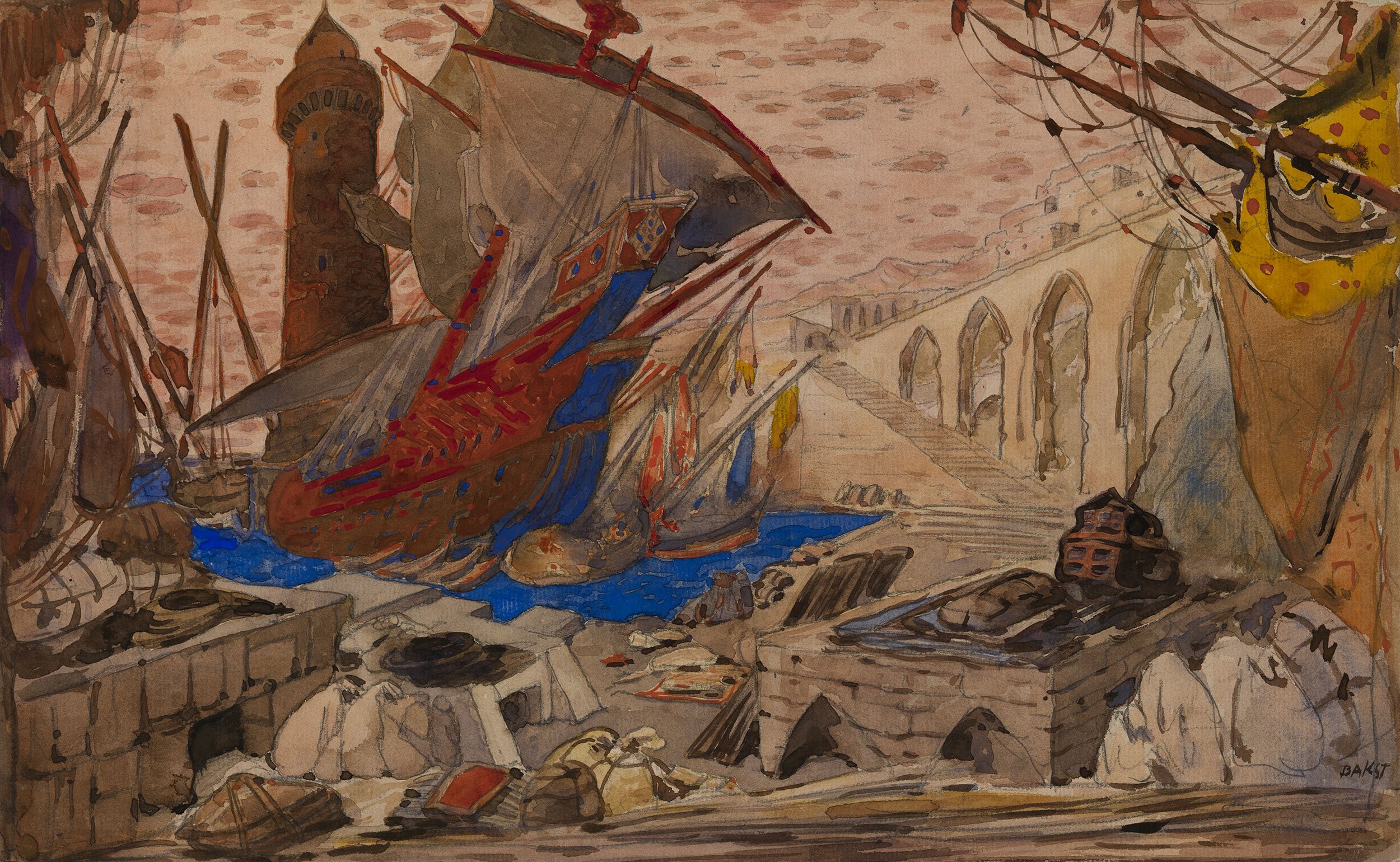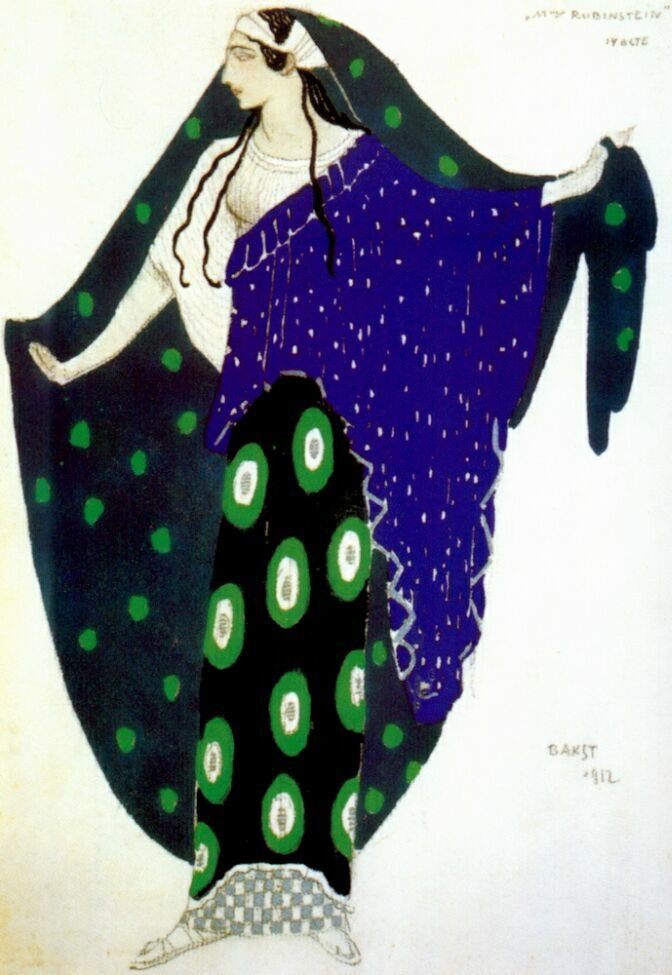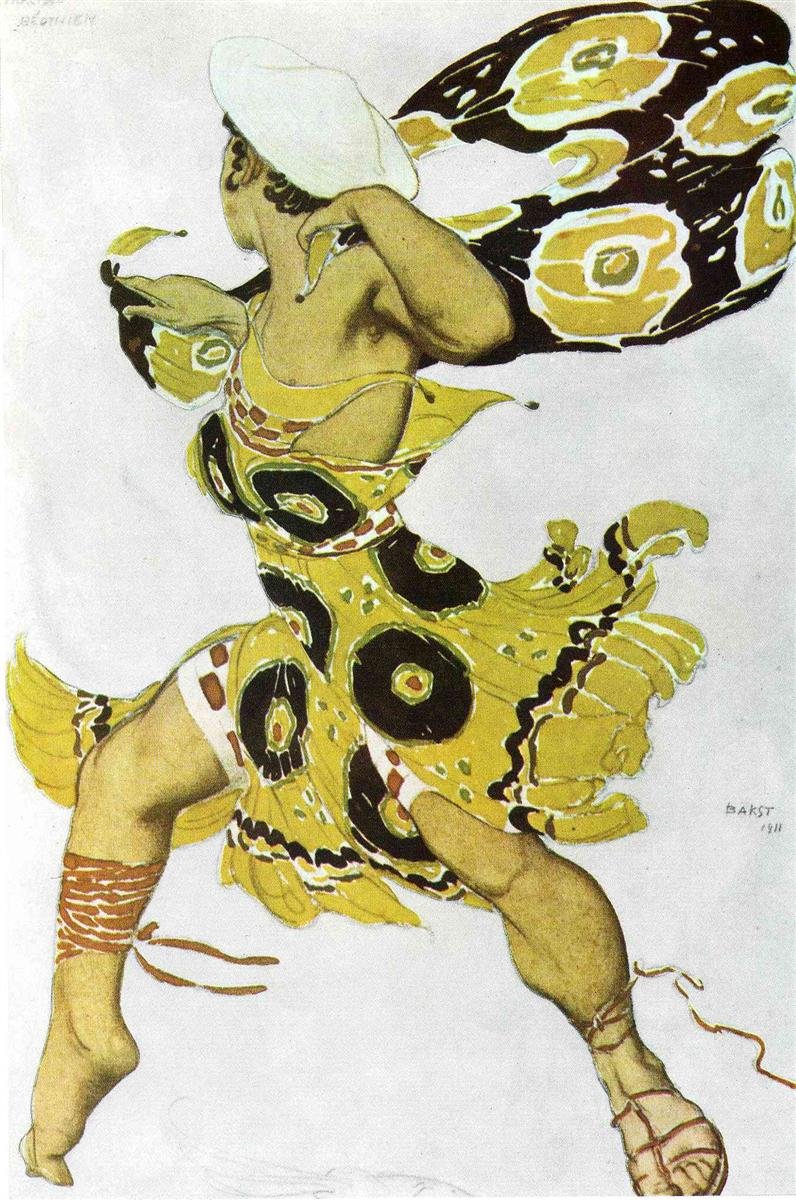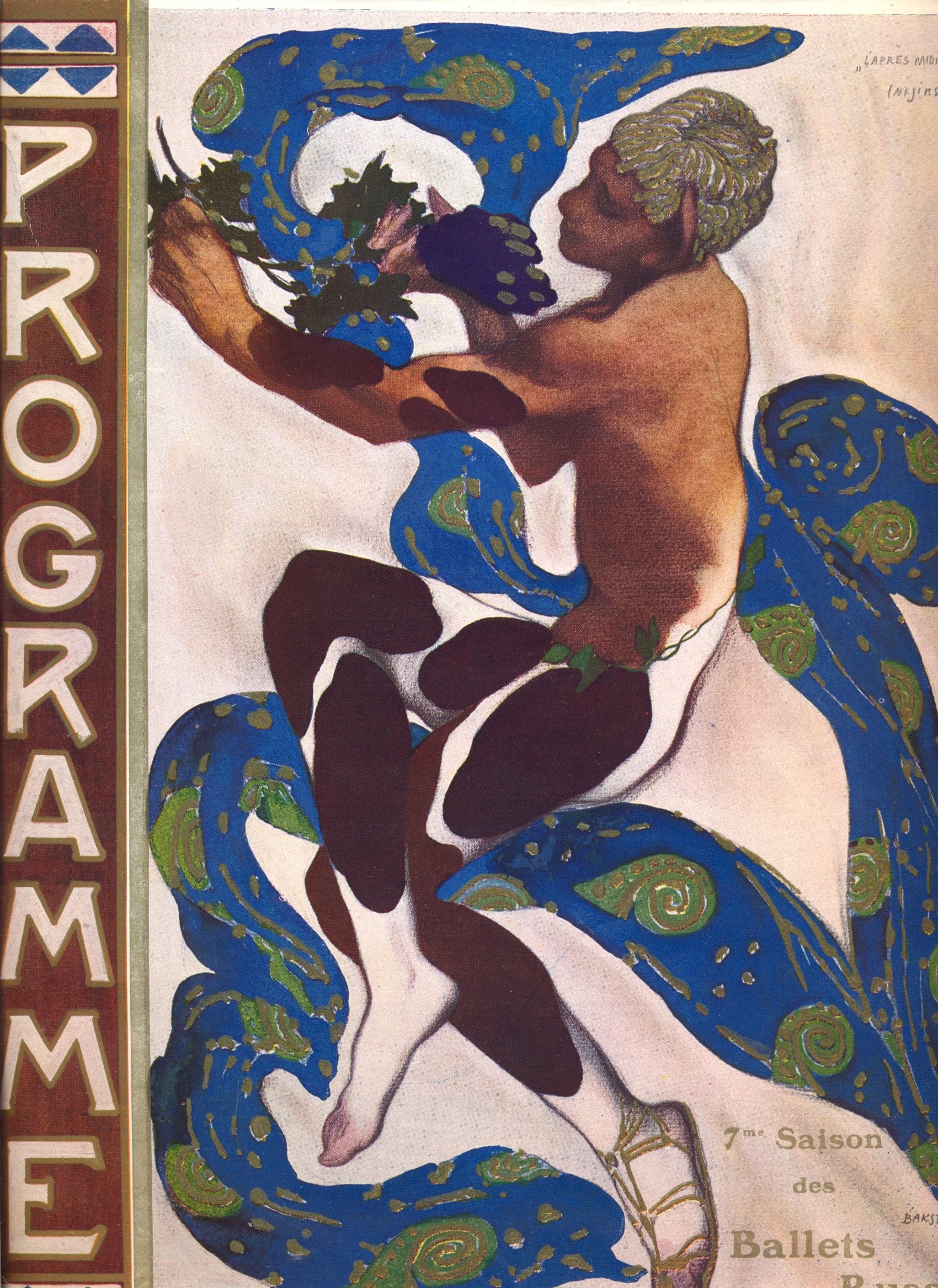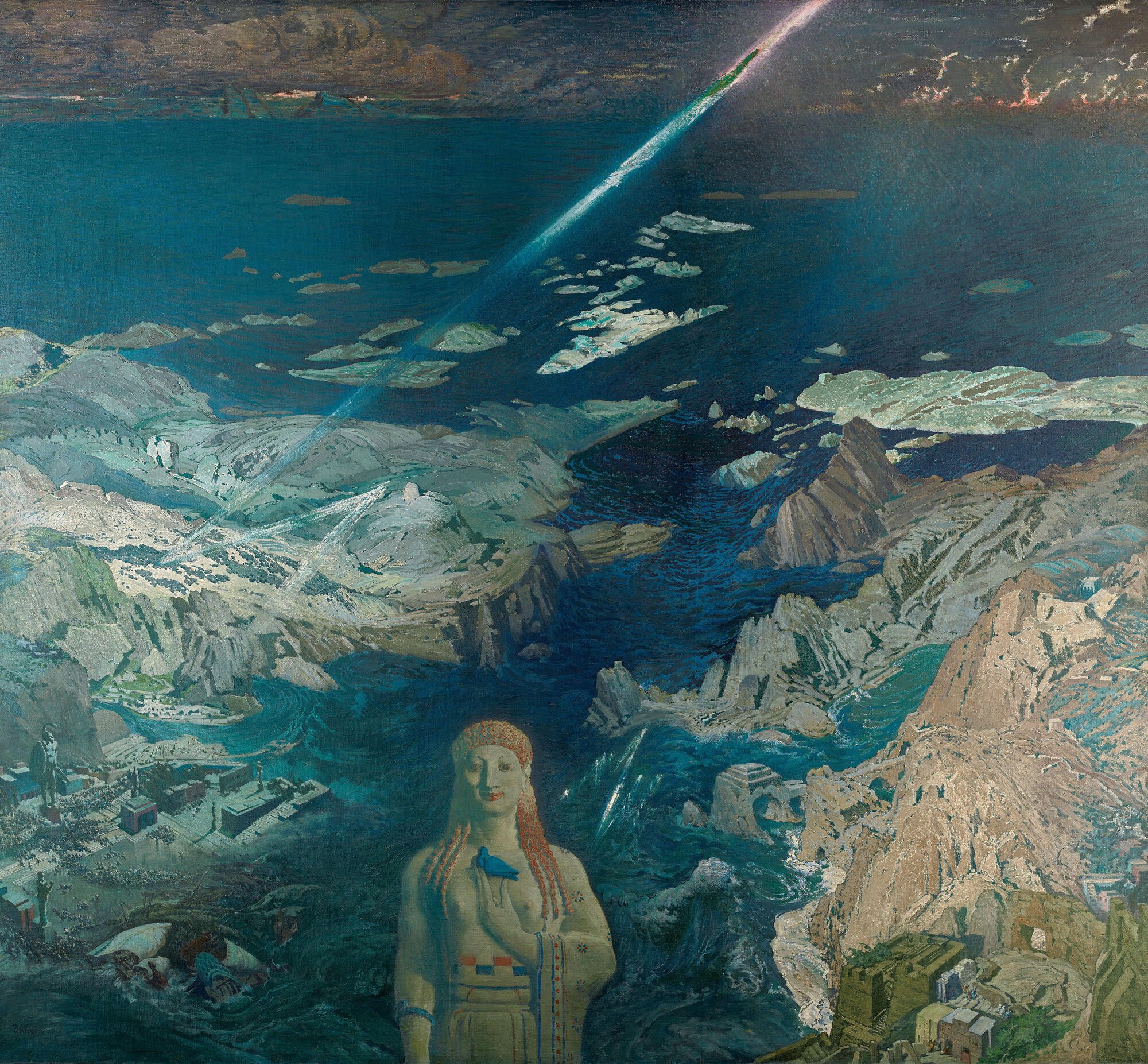Artist Profile: Léon Bakst
Costume design for Chinese dancer, 1917
Léon Bakst
Лейб-Хаим Израилевич Розенберг
Born: May 10 1866 in Grodno, Russia
Died: December 27 1924, Paris
Style: Art Nouveau
Education: Académie Julian, Paris, France, Zvantseva School of Drawing and Painting, St. Petersburg, Russia
Of the many iconic artists and creatives who worked with and designed for the Ballets Russes (the legendary ballet company of the 20th century from 1909-1929 that revolutionised theatre and dance), Leon Bakst was arguably the most memorable.
Bakst was born Lev Samoylovich Rosenberg on May 10 1866 in Grodno, Russia, now Hrodna, Belarus. He was of Jewish Russian descent, growing up in Russia when there was much hostility and antisemitism towards the Jewish people.
Though proud of his heritage he changed his last name and was forced to convert when he married his wife from 1903-1910.
La Péri costume of Iskender for Nijinsky, 1922
In 1890 he was introduced to Alexandre Benois and his circle, known as Nevsky Pickwickians and it was there that he met Serge Diaghilev – later the founder of Ballet Russes.
After travelling through Europe he settled back in Russia and set up the Mir Iskusstva (“World of Art”) movement with Diaghilev, which aimed to educate the Russian people on subjects and trends within the art world. The group became increasingly interested in theatrical production and in 1909 Bakst began designing sets and costumes for the newly formed ballet company with Diaghilev.
Harvard Theatre Collection - Bakst, For Daphnis et Chloé by Maurice Ravel, 1912.
Self-portrait of Léon Bakst, 1893
He had a unique way of communicating new ideas and culture through his design, which came from a depth of knowledge and understanding of periods and places. Orientalism swept across Europe during the early 20th century, and where some artists romanticised it, Bakst took a more bold approach with his use of colour and shape.
A falling out with Diaghilev led Bakst to leave the company and find work elsewhere, which he had no trouble in doing with companies set up by some of the principal dancers such as Anna Pavlova and Ida Rubenstein.
Bakst’s most memorable designs included those for Cleopatre, Daphnis and Chloë, Narcisse and The Firebird.
Costume design for a bacchante in Narcisse by Tcherepnin, 1911
Baskst's earlier work with Mir Iskusstva as a graphic artist, influenced his designs as he created costumes using bold colours and shapes that had not been seen on the classical dance stage before.
The Ballet Russes influenced many artists and attracted them to collaborate and design for productions over its 20-year history. Notable artists included Pablo Picasso, Henri Matisse and Alexandre Benois, and designer Gabriele Chanel, among many others.
Bakst’s designs for the Ballet Russes intoxicated and seduced audiences and he became artistic director of the company during its heyday from 1909-1914.
The Princess and the Court Fall Asleep for a Hundred Years (The Sleeping Beauty), 1913-22.
Outside of his design work, Bakst was also commissioned by wealthy families during the Art Deco era.
One such piece was a seven-panel mural of The Sleeping Beauty story for James and Dorothy de Rothschild at Waddesdon Manor in Buckinghamshire in 1913.
Bakst passed away on December 27 1924, in Paris due to lung problems. A huge procession of famous artists, poets, musicians, dancers and critiques followed his body to its final resting place at Cimetière des Batignolles.




